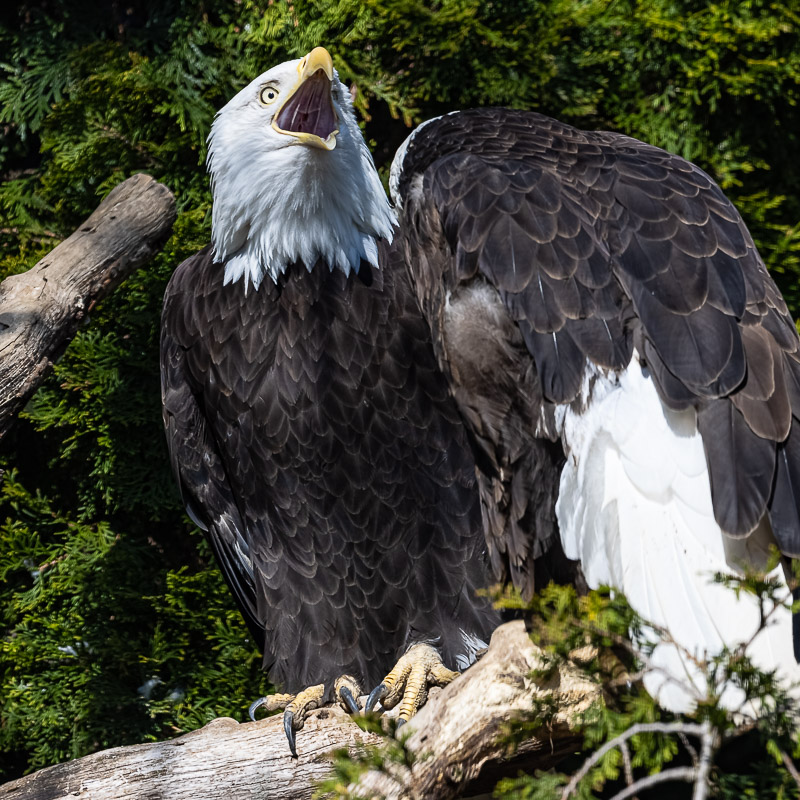Summary:
1. The name “bald eagle” is misleading as it doesn’t refer to its lack of feathers but to its white head.
2. The bald eagle’s unique physical characteristics set it apart from other raptors.
3. The bald eagle’s symbolism and significance in American culture and history.
4. The conservation efforts and success stories concerning the bald eagle.
5. Interesting facts and lesser-known details about the bald eagle’s behavior and habitat.
Have you ever noticed how a bald eagle isn’t bald? The name derives from Old English when “bald” meant “white!” Let’s delve into the bald eagle’s fascinating world and discover what makes it an exceptional creature.
1. The Misleading Name:
When we hear the term “bald eagle,” we automatically assume it refers to the bird’s lack of feathers on its head. However, this is not the case. The name stems from the Old English word “balde,” which means white. So, rather than being bald, the bald eagle is distinguished by its white head and golden-brown body. This unique coloration sets the bald eagle apart from other raptors, making it instantly recognizable.
2. Unique Physical Characteristics:
Apart from its striking coloration, the bald eagle possesses several other physical characteristics that make it truly remarkable. With a wingspan that can reach up to 7 feet, the bald eagle is one of North America’s largest birds of prey. Its sharp, hooked beak makes it tear apart its prey precisely. Additionally, the bald eagle has exceptionally strong talons that help it grasp and carry its prey. Combined with its keen eyesight, these adaptations make the bald eagle a skilled hunter.
3. Symbolism and Significance:
The bald eagle holds a special place in American culture and history. It has been the national emblem of the United States since 1782, symbolizing freedom, strength, and resilience. The bald eagle’s inclusion on the Great Seal of the United States is a testament to its importance in American identity. Its image can be found on official emblems, currency, and military insignia, further solidifying its significance.
4. Conservation Success:
At one point in history, the bald eagle faced significant population decline due to habitat loss, hunting, and the use of harmful pesticides. However, the bald eagle made a remarkable recovery through dedicated conservation efforts. Banning the pesticide DDT and establishing protected areas played crucial roles in the species’ revival. Today, the bald eagle population in North America is thriving, with numbers steadily increasing.
5. Lesser-Known Facts:
Beyond its symbolism and conservation success, the bald eagle possesses intriguing traits and behaviors. For instance, did you know bald eagles are known for their impressive courtship rituals? These rituals involve elaborate aerial displays which showcase their agility and prowess. Additionally, bald eagles are highly skilled at adapting to their environment. While they are typically associated with fish-rich habitats, they can also be found near lakes, rivers, and coastal areas.
In Conclusion:
The bald eagle’s name may be misleading, but its unique features, symbolism, conservation success stories, and intriguing behaviors make it captivating. From its white head to its impressive wingspan, the bald eagle is an unmistakable symbol of strength and resilience. It serves as a reminder of the importance of preserving our natural heritage and the remarkable impact conservation efforts can have on endangered species. So, the next time you spot a bald eagle soaring through the sky, take a moment to appreciate its beauty and the incredible story behind its name.
*****
Source Description
Have you ever noticed how a bald eagle isn’t bald? The name derives from Old English when “bald” meant “white!”
📸 : @kopperheadpix

